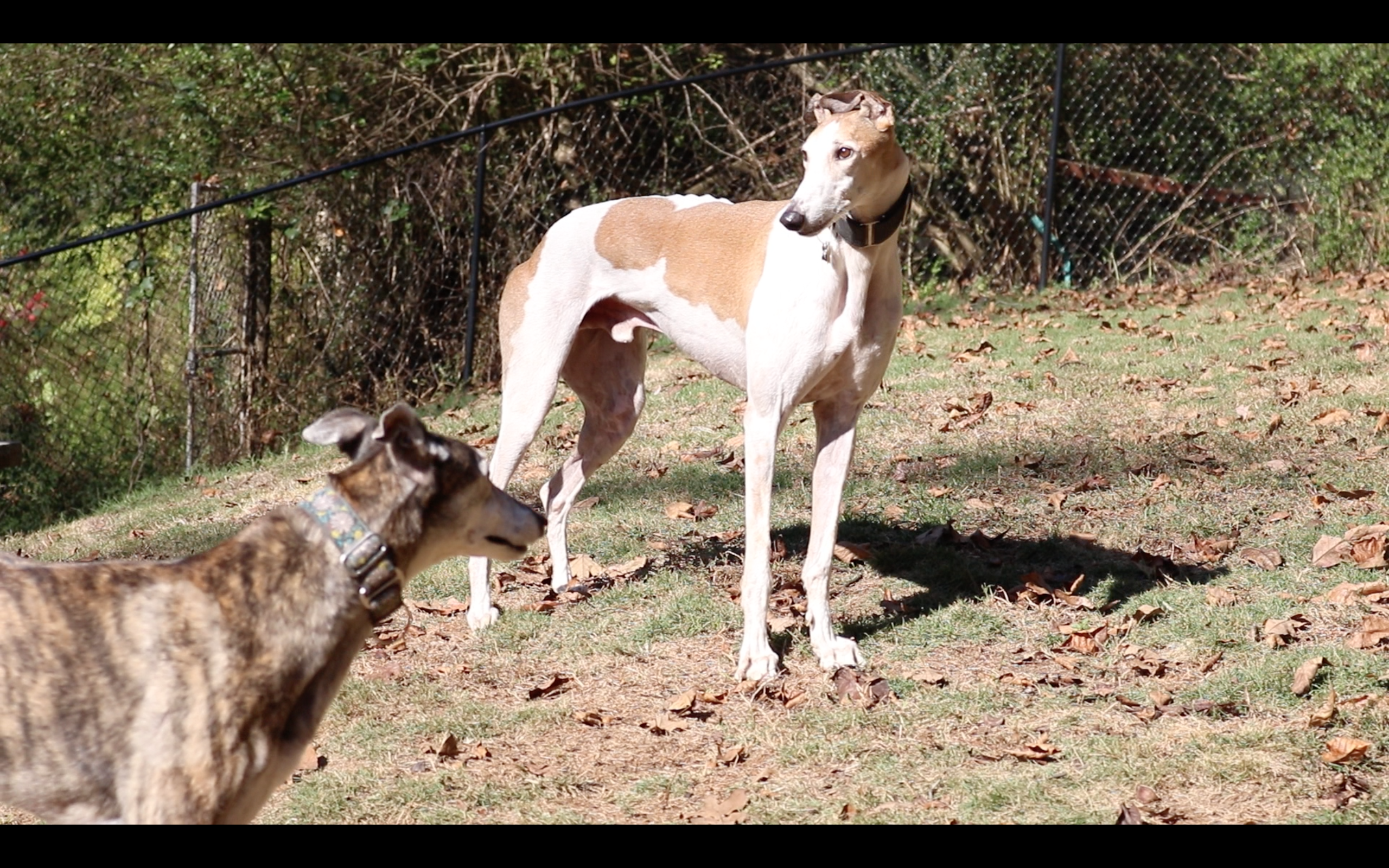
The world’s fastest couch potato
By Nikki Weldon

Woody. Not the character from Toy Story, but one of the world’s fastest coach potatoes: a greyhound.
Amy Schluter-Tohal, a native of St. Johns, Florida, adopted Woody in 2008 when he was only three years old. Woody was the first of five greyhounds Amy has rescued. All of which were adopted from Greyhounds as Pets of Northeast Florida in Jacksonville, Florida.
“Knowing that I get to at least help a few makes me feel better,” Schluter-Tohal said.
While dog racing has declined in recent years, the United States still has 19 operating tracks. According to ASPCA, Alabama, Arkansas, Florida, Iowa, Texas and West Virginia are the only six states that have tracks still being used. More than half of those tracks are located in Florida.
When the greyhounds hit the racetrack, owners, trainers and gamblers see dollar signs. As soon as the race is over, the greyhounds are seen as “disposable running machines” according to PETA. Greyhound racing generates millions of dollars, but recent exposures of greyhound cruelty have resulted in a dramatic decline in spectators attending races. According to ASPCA, dogs in the industry are stacked in warehouse-style kennels for 20 or more hours a day, or kept in dirt pens outside with little shelter.
However, the Greyhound Racing Association of America Inc., states that the greyhounds are kept in climate-controlled kennels where they are let out multiple times a day. They are taken on walks and released on sprint paths for mild exercise each day.
Schluter-Tohal wasn’t raised in the racing world, so her curiosity is what drove her to the greyhound track before adopting her first greyhound.
“I might have been a tad bit obsessed with the greyhounds cause I wanted to adopt them so much, is what led me to the track more times than I probably should have gone,” Schluter-Tohal said. “I guess it’s the fascination of the greyhound racing is what brought me out there. Also, like I said, to see the dogs.”
Schluter-Tohal has been following a doping scandal that occurred in Florida, which was brought to light in recent months. First Coast News obtained records that uncovered the “largest greyhound drug case in American history”. At least 12 dogs in greyhound trainer Charles McClellan’s care tested positive for cocaine at Bestbet Orange Park.
After each race, Florida requires the winner, along with another randomly chosen dog, to be tested for drugs. Urine tests that were taken by the University of Florida College on Medicine Racing Laboratory came back positive for Benzoylecgonine (BZE) – a metabolite of cocaine.
By drugging greyhounds, trainers can control and improve the performance of their dogs on the track and in the gambling ring by earning those who are aware big bucks.

While greyhounds can live up to 13 or more years, they are usually around 18 months to 5 years old when they are retired from racing because they are either regarded as unqualified for racing after an injury, or too slow and no longer profitable. Some of the lucky dogs retired from racing are sent to rescue groups, but others aren’t so lucky. The rest are sent to breeding facilities, or worse, killed.
The Greyhound Racing Association of America Inc., states that the amount of greyhounds bred has dramatically reduced and the amount of greyhounds adopted out of racing has increased. For example, just under 30,000 dogs were bred in 1997. Today, the number has decreased to around 10,500 greyhounds bred each year.
Injuries and sickness take the lives of many greyhounds. According to PETA, more than 11,700 greyhound injuries have been documented nationwide. These injuries include heatstroke, heart attacks, electrocution, fractured skulls, broken necks and more than 3,000 broken legs.
The safety of greyhounds is a top priority according to the Greyhound Racing Association of America Inc. There is a veterinarian on the premises at each track to make certain that the greyhounds remain in good health. The industry also funds extensive on-going research at the University of Florida’s Center for Veterinary Sports Medicine into ensuring track safety.

Woody was one of the fortunate greyhounds to be rescued at a young age after breaking one of his hind legs and was retired from racing. He lived to be 13 years old before dying recently from natural causes.
Schluter-Tohal currently has three greyhounds and wants to continue rescuing in the future.
“I definitely plan on adopting at least one more (greyhound) with this group,” said Schluter-Tohal. “I think four would be plenty.”